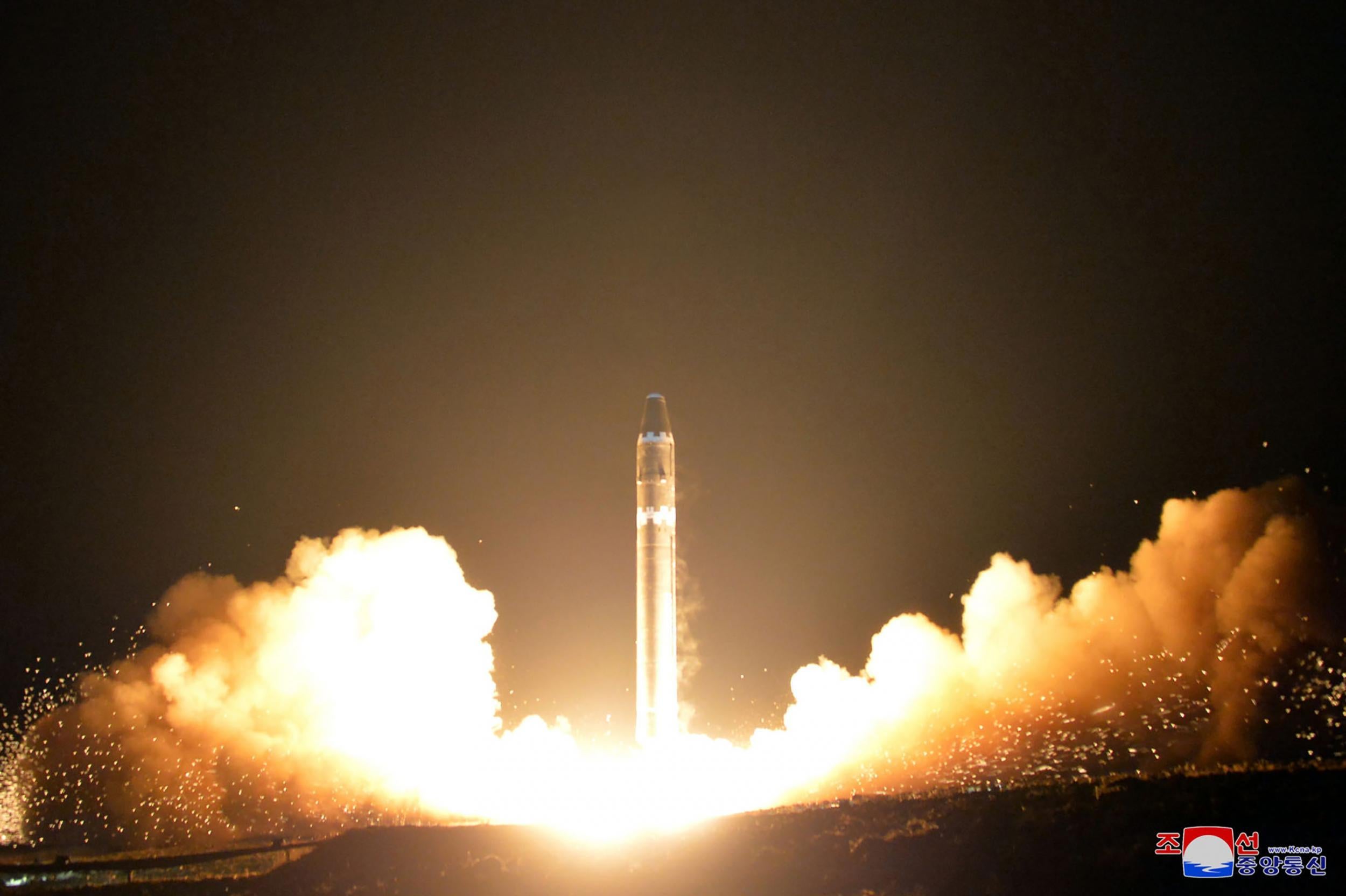US seeking new missile defence sites on West Coast as North Korea nuclear attack fears grow, congressmen say
Pressure grows on government to respond to increasing likelihood Kim Jong-Un regime has missiles that could hit mainland America

Your support helps us to tell the story
From reproductive rights to climate change to Big Tech, The Independent is on the ground when the story is developing. Whether it's investigating the financials of Elon Musk's pro-Trump PAC or producing our latest documentary, 'The A Word', which shines a light on the American women fighting for reproductive rights, we know how important it is to parse out the facts from the messaging.
At such a critical moment in US history, we need reporters on the ground. Your donation allows us to keep sending journalists to speak to both sides of the story.
The Independent is trusted by Americans across the entire political spectrum. And unlike many other quality news outlets, we choose not to lock Americans out of our reporting and analysis with paywalls. We believe quality journalism should be available to everyone, paid for by those who can afford it.
Your support makes all the difference.The US agency tasked with protecting the country from missile attacks is scouting the West Coast for places to deploy new anti-missile defences, two Congressmen said on Saturday, as North Korea's missile tests raise concerns about how the United States would defend itself from an attack.
West Coast defences would likely include Terminal High Altitude Area Defense (THAAD) anti-ballistic missiles, similar to those deployed in South Korea to protect against a potential North Korean attack.
The accelerated pace of North Korea's ballistic missile testing programme in 2017 and the likelihood the North Korean military could hit the US mainland with a nuclear payload in the next few years has raised the pressure on the United States government to build-up missile defences.
On Wednesday, North Korea tested a new type of intercontinental ballistic missile (ICBM) that can fly over 13,000 km (8,080 miles), placing Washington within target range, South Korea said on Friday.
Congressman Mike Rogers, who sits on the House Armed Services Committee and chairs the Strategic Forces Subcommittee which oversees missile defence, said the Missile Defense Agency (MDA), was aiming to install extra defences at West Coast sites. The funding for the system does not appear in the 2018 defence budget plan indicating potential deployment is further off.
"It's just a matter of the location, and the MDA making a recommendation as to which site meets their criteria for location, but also the environmental impact," the Alabama Congressman and Republican told Reuters during an interview on the sidelines of the annual Reagan National Defense Forum in southern California.
When asked about the plan, MDA Deputy Director Rear Admiral Jon Hillâ said in a statement: "The Missile Defense Agency has received no tasking to site the Terminal High Altitude Air Defense System on the West Coast."
The MDA is a unit of the U.S. Defense Department.
Congressman Rogers did not reveal the exact locations the agency is considering but said several sites are "competing" for the missile defence installations.
Rogers and Congressman Adam Smith, a Democrat representing the 9th District of Washington, said the government was considering installing the THAAD anti-missile system made by aerospace giant Lockheed Martin Corp, at west coast sites.
The Congressmen said the number of sites that may ultimately be deployed had yet to be determined.
THAAD is a ground-based regional missile defence system designed to shoot down short-, medium- and intermediate-range ballistic missiles and takes only a matter of weeks to install.
In addition to the two THAAD systems deployed in South Korea and Guam in the Pacific, the U.S. has seven other THAAD systems. While some of the existing missiles are based in Fort Bliss, Texas, the system is highly mobile and current locations are not disclosed.
A Lockheed Martin representative declined to comment on specific THAAD deployments, but added that the company "is ready to support the Missile Defense Agency and the United States government in their ballistic missile defence efforts." He added that testing and deployment of assets is a government decision.
In July, the United States tested THAAD missile defences and shot down a simulated, incoming intermediate-range ballistic missile (IRBM). The successful test adds to the credibility of the U.S. military's missile defence programme, which has come under intense scrutiny in recent years due in part to test delays and failures.
Currently, the continental United States is primarily shielded by the Ground-based Midcourse Defense system (GMD) in Alaska and California as well as the Aegis system deployed aboard U.S. Navy ships. The THAAD system has a far higher testing success rate than the GMD.
The MDA told Congress in June that it planned to deliver 52 more THAAD interceptors to the U.S. Army between October 2017 and September 2018, bringing total deliveries to 210 since May 2011.
North Korea's latest missile test puts the U.S. capital within range, but Pyongyang still needs to prove it has mastered critical missile technology, such as re-entry, terminal stage guidance and warhead activation, South Korea said on Friday.
Reuters
Join our commenting forum
Join thought-provoking conversations, follow other Independent readers and see their replies
Comments